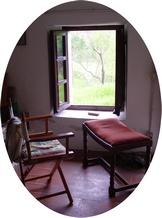
excerpt
XinJia
LaoJia and XinJia are the two long forms of Chentaiji. Lao means old, and xin means new, they are the ‘old’ and ‘new’ frames of the Chen family’s style. The creation of XinJia is credited to Chen XiaoWang’s grandfather, Chen FaKe. Seeing Master Chen perform it in the park in Oxford was an electrifying experience. I felt as though I had no time to lose, I could spend the rest of my life trying to fathom its depths.
Upon arriving in Sydney for our next period of study, we quickly settled into the daily rhythm established the year before — ZhanZhuang and Chansigong corrections, then correction of form gone through section by section to the end. We began with LaoJia, then the 38 Form. Master Chen wondered what I would like to learn next, and hardly daring to ask, I said, “XinJia!”
Learning it was revelatory. Its way of moving feels ancient, ab-original; an instinctive rationale threads the form together. It made me wonder, had this been a case of the old world being discovered as ‘new’?
Both long forms follow the same outline, move by move, with XinJia containing greater intricacy of detail, the major stances approached more elaborately, adding up to a slightly longer form. If we were to imagine them as two works of abstract design, LaoJia would be of broad swathes of harmonious colours weaving gently in and out of one another, with a clear rhythm and order. XinJia would stand in strong contrast, the colours intense and at times of strange hues, patterns swirling in startling ways, its rhythm contrapuntal.
Chen XiaoWang in schoolboyish mood once said of the two forms, “LaoJia like rifle, XinJia like machine-gun!” LaoJia is a wide, lazy river. Though its surface is calm, it pulls with a strong current. A few whirlpools lie along its course, as it flows steadily through gently rolling hills, all the way out to sea. XinJia is a mountain river, tumultuous, unpredictable, with narrow defiles and precipitous gorges, where one may happen upon a still pool, “flowing from an unknown source, to pour itself into an unknown sea”.
Our 1997 visit to Sydney turned out to be a XinJia-intensive. To my request that we learn XinJia, Master Chen replied that six of his students from Japan were about to arrive. If we could learn the form before they arrived, we would be able to join them in their daily lessons. And so we plunged into XinJia’s torrent.
Learning a form from Master Chen in a seminar is a relaxed
process; he demonstrates short sections several times over,
and when you go through the moves without him, you can sneak
a look at others around you.  But alone with him, you had
better be on the ball cento per cento, as the Italians say,
100 per cent (or very nearly), or you feel a real fool. At
least there were two of us, and we certainly needed the
combined memorizing capacity of both. He would show us a
short sequence, twice or three times at the most. Then we
each had to repeat it. It was nerve-wracking, but he was
also very kind. There were times when he would say, “Look at
that tree! It is very funny.” For us Northerners, Australian
trees are like beings from another planet. He would distract
us, make us laugh, and relax in our efforts. And so we
learned XinJia.
But alone with him, you had
better be on the ball cento per cento, as the Italians say,
100 per cent (or very nearly), or you feel a real fool. At
least there were two of us, and we certainly needed the
combined memorizing capacity of both. He would show us a
short sequence, twice or three times at the most. Then we
each had to repeat it. It was nerve-wracking, but he was
also very kind. There were times when he would say, “Look at
that tree! It is very funny.” For us Northerners, Australian
trees are like beings from another planet. He would distract
us, make us laugh, and relax in our efforts. And so we
learned XinJia.
It begins like LaoJia. The first few movements are in principle identical. But there is a zest particular to XinJia, a quickening pulse that one feels from the very beginning, anticipating the moment when XinJia shows itself for the first time, in a subtle recoil just before the stamp of ‘Pounding the Mortar’.
|
next |

